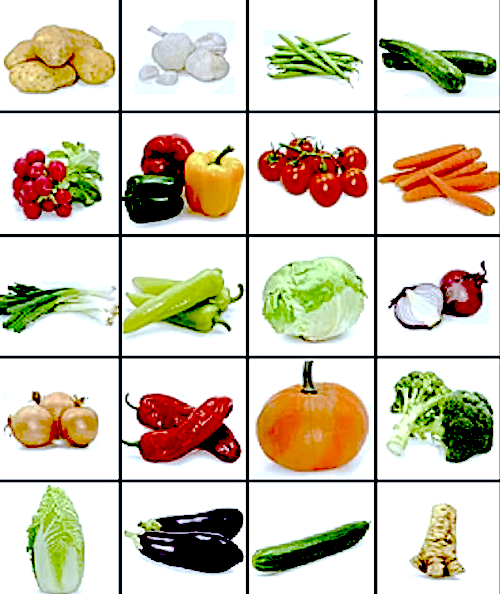|
|
Developmental Biology - Premature Birth
Vegetable Diet Lowers Risk of Premature Birth
It turns out 'old wives tales' about eating our vegetables for a healthy life - also applies in pregnancy...
A new study out of Australia, finds eating traditional veggies before pregnancy lowers the risk of a premature birth.
University of Queensland PhD candidate Dereje Gete analysed diets of nearly 3,500 women to find high consumption of carrots, cauliflower, broccoli, pumpkin, cabbage, green beans and potatoes before conception helped women reach full term pregnancy. The research is published in The American Journal of Clinical Nutrition.
"Traditional vegetables are rich in antioxidants or anti-inflammatory nutrients, which have a significant role in reducing the risk of adverse birth outcomes.
Women depend on certain stored nutrients such as calcium and iron before conception, which are critical for placenta and fetal tissue development.
Starting a healthier diet after the baby has been conceived may be too late, because babies are fully formed by the end of the first trimester ."
Dereje Gete PhD, School of Public Health, Faculty of Medicine, University of Queensland, Queensland, Australia.
Professor Gita Mishra points out that study suggested dietary intervention and strategies to change eating behaviours, may be helpful when women start thinking about having a baby and before they conceive.
"People born prematurely face a greater risk of metabolic and chronic diseases in adulthood, as well as poor cognitive development and academic performance."
Gita D. Mishra PhD, Professor, School of Public Health, Faculty of Medicine, University of Queensland, Queensland, Australia.
Premature births, those before 37 weeks of gestation are completed, are the leading cause of death in Australian children and affect 8.5 per cent of births each year, a figure trending upwards.
This research was part of the Australian Longitudinal Study on Women's Health, a large ongoing population-based study of more than 57,000 women investigating the role of socio-demographic, biological, physical, environmental and behavioural factors on health and well-being.
Abstract
Background
Findings from previous studies on associations between prepregnancy dietary patterns and preterm birth and low birth weight (LBW) are limited and inconsistent.
Objectives
To examine the association between prepregnancy dietary patterns and the risk of preterm birth and LBW.
Methods
This study included 3422 and 3508 singleton live births from the Australian Longitudinal Study on Women's Health (ALSWH) for the analyses of preterm birth and LBW, respectively. We included women who were nulliparous and nonpregnant at baseline surveys. We used factor analyses and the Healthy Eating Index-2015 (HEI-2015) score to derive maternal dietary patterns. Four dietary patterns were identified with factor analyses: meats and high-fats; prudent diets; sugar, refined grains, and processed foods; and traditional vegetables. Preterm birth and LBW were assessed using maternal reports from ALSWH data between 2003 and 2015. Multivariable logistic regression analyses were used.
Results
Greater adherence to the traditional vegetables pattern before pregnancy was associated with a lower risk of preterm birth and spontaneous preterm birth after adjustments for lifestyle factors and pregnancy complications, highest compared with lowest tertile (adjusted OR = 0.72, 95% CI: 0.53, 0.99) and (RR ratio = 0.62, 95% CI: 0.39, 1.00), respectively. However, these associations were attenuated by the prepregnancy BMI. No significant associations were observed between prepregnancy dietary patterns and LBW.
Conclusion
This study suggests that better adherence to the traditional vegetables pattern before pregnancy is associated with a lower risk of preterm birth, particularly spontaneous preterm birth among nulliparous women. This finding warrants further examination.
Authors
Dereje G Gete, Michael Waller, Gita D Mishra.
Return to top of page.
| |
|
Apr 20 2020 Fetal Timeline Maternal Timeline News
 Graphical abstract of the current paper. Research finds carrots, cauliflower, broccoli, pumpkin, cabbage, green beans and potatoes help women reach full term pregnancy. CREDIT Pinterest.
|



